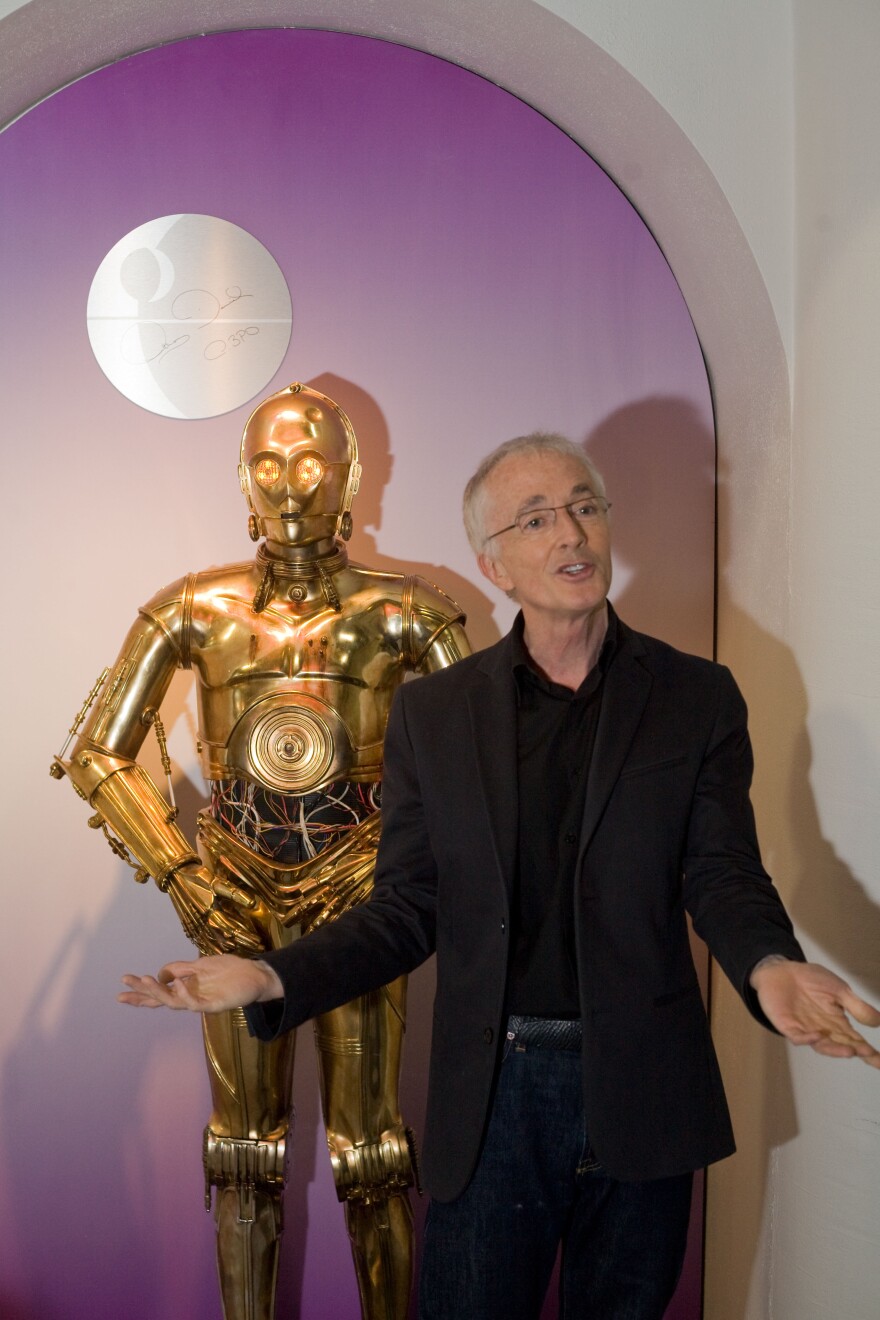Few things change faster than technology. So while many in Pittsburgh will miss the Carnegie Science Center's “roboworld” exhibit, perhaps the wonder isn’t that it’s leaving, but that it lasted so long.
Roboworld, which opened in June 2009, will close for good on Sunday, June 19.
“We hear from visitors that they like to see things change regularly, and so, given that it is the longest-standing permanent exhibition at the Science Center, we thought it was time to replace it,” said Center director Jason Brown.

The interactive exhibit opened 13 years ago with fanfare, including a visit from Anthony Daniels, the British actor who played C-3PO in the Star Wars movies. The Center designed roboworld not only to explain robots, but to tout Pittsburgh’s burgeoning robotics industry, with input (and robots) from Carnegie Mellon University and local firms including RedZone Robotics and Integrated Industrial Technologies.
The exhibit is huge, taking up 7,500 square feet on the Science Center’s second floor, which it shares with the Buhl Planetarium and the Miniature Railroad & Village. And it remains popular. On a recent weekday afternoon, it was busy with a few dozen children and adults.
Visitors are welcomed by Andy, the robo-thespian, who at the push of a button will introduce the exhibit, croon a verse or two of “Singin’ In The Rain” or perform any number of other verbal feats. Displays explain the technology behind robot perception, cognition and action, and show it off with interactives like a chatbot named Athina, Air HockeyBot 1000 and SpiroPhone, a towering robotic xylophone that visitors can play themselves – or instruct to play a pre-programmed tune.
And then there’s the popular basketball bot: A two-story robotic arm that scoops basketballs from a trough and sinks free throws with about 75 percent accuracy – typically far better than the humans who try the same trick at another hoop right alongside it.
How well did roboworld fulfill its mission? “I think it did amazingly well,” said Illah Nourbakhsh, a Carnegie Mellon robotics professor who was among the CMU faculty who contributed to early iterations of roboworld.
He said the exhibit’s longevity is partly a testament to the perennial themes of robotics – like trying to improve robots’ ability to perceive the world around them accurately.
“The grand challenges roboworld showed off are the same grand challenges we deal with in robotics all the time,” Nourbakhsh said.
The exhibit was updated over the years: Spirophone, for instance, was added in 2018. But if roboworld failed to keep up with cutting-edge robotics technology, Nourbakhsh said, it’s because that’s hard to do in a field where last year’s research is already outdated.
“What’s missing in roboworld, and what’s exciting now, are things like machine learning,” he said. “They had trouble getting to that one because that one moves so fast.”
What happens next? The movie robot inductees from the exhibit’s Robot Hall of Fame -- from C-3PO and R2-D2 from "Star Wars" to Maria from “Metropolis” and HAL 9000 from “2001: A Space Odyssey” -- have already been relocated to the lobby of the Rangos Giant Cinema. The big, free-throw-shooting basketball robot will soon take up residence in the Center’s Sportsworks facility. And Andy, the singing “robo-thespian” who greets visitors to roboworld, will move to the Science Center’s main lobby.
Most everything else in the exhibit – including Adam 40-80, a video-display robot created for a tech industry convention in 2000; and Raven, a kiosk-like tour guide built in 2002 for the Aviary -- will go into storage until the Science Center decides what to do with it.
In November, the museum plans to open its first new permanent exhibit since the Little Learners’ Clubhouse in 2017. Mars: The Next Great Step will move into the old roboworld space.
The interactive exhibit tackles Martian exploration, but Center director Brown said it doesn’t focus on Mars’ low gravity, subzero temperatures and years that last 687 days. Rather, based on extensive community engagement, it explores not just how humans might live on Mars, but why the planet is worth studying at all.
“It looks at not only what we can do in space but how that informs and betters the lives of everyone that’s still here on Earth,” Brown said.







